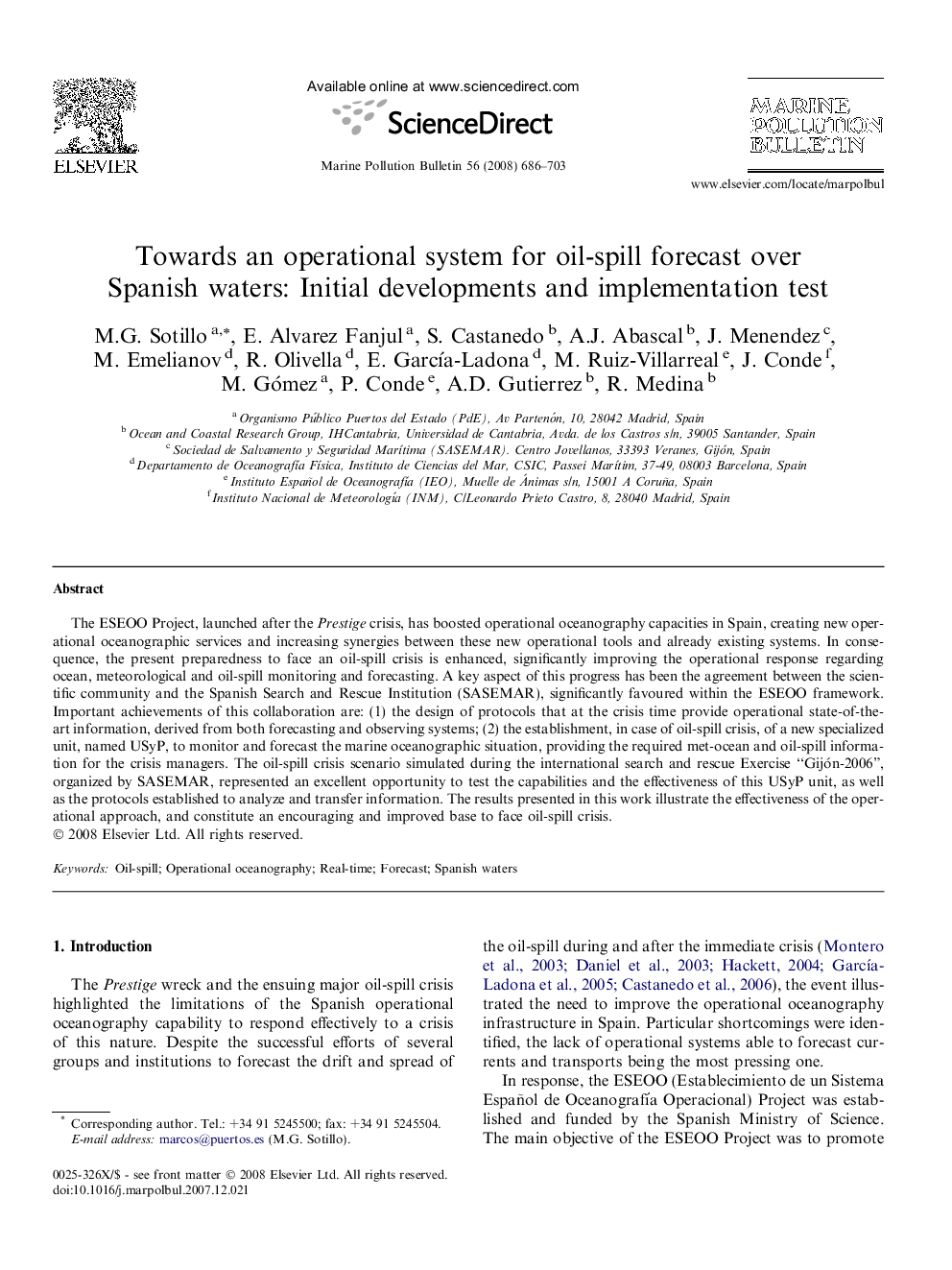| Article ID | Journal | Published Year | Pages | File Type |
|---|---|---|---|---|
| 4477153 | Marine Pollution Bulletin | 2008 | 18 Pages |
The ESEOO Project, launched after the Prestige crisis, has boosted operational oceanography capacities in Spain, creating new operational oceanographic services and increasing synergies between these new operational tools and already existing systems. In consequence, the present preparedness to face an oil-spill crisis is enhanced, significantly improving the operational response regarding ocean, meteorological and oil-spill monitoring and forecasting. A key aspect of this progress has been the agreement between the scientific community and the Spanish Search and Rescue Institution (SASEMAR), significantly favoured within the ESEOO framework. Important achievements of this collaboration are: (1) the design of protocols that at the crisis time provide operational state-of-the-art information, derived from both forecasting and observing systems; (2) the establishment, in case of oil-spill crisis, of a new specialized unit, named USyP, to monitor and forecast the marine oceanographic situation, providing the required met-ocean and oil-spill information for the crisis managers. The oil-spill crisis scenario simulated during the international search and rescue Exercise “Gijón-2006”, organized by SASEMAR, represented an excellent opportunity to test the capabilities and the effectiveness of this USyP unit, as well as the protocols established to analyze and transfer information. The results presented in this work illustrate the effectiveness of the operational approach, and constitute an encouraging and improved base to face oil-spill crisis.
